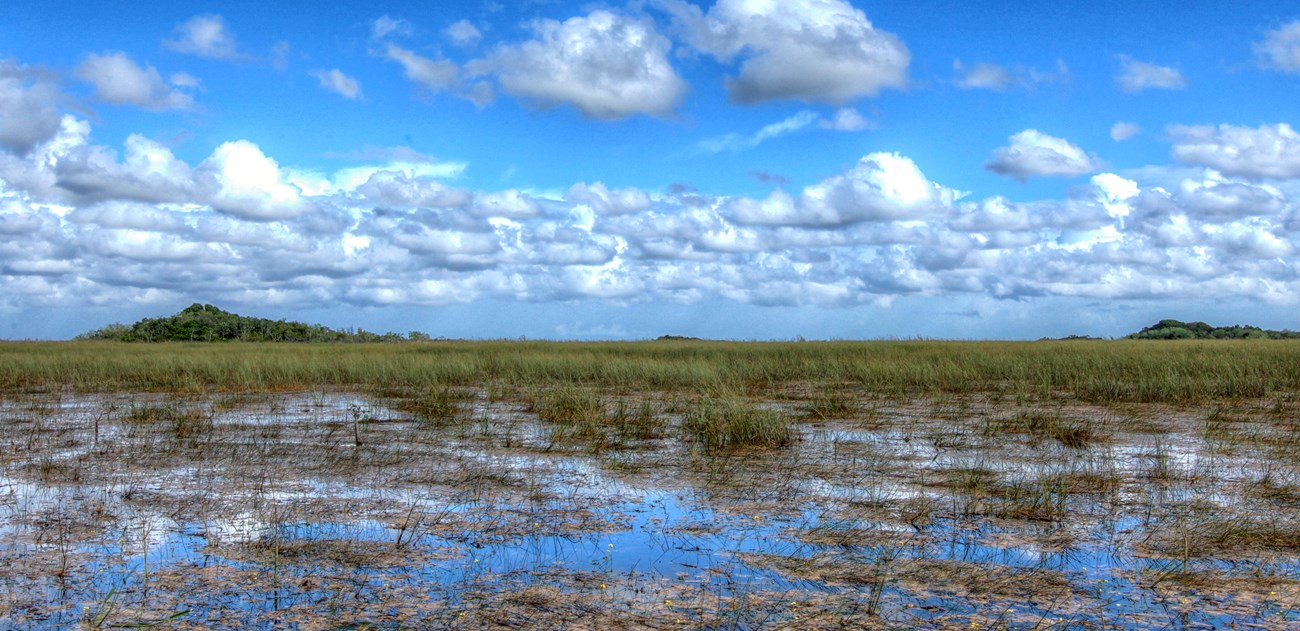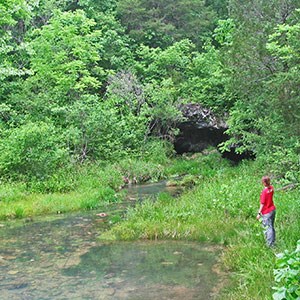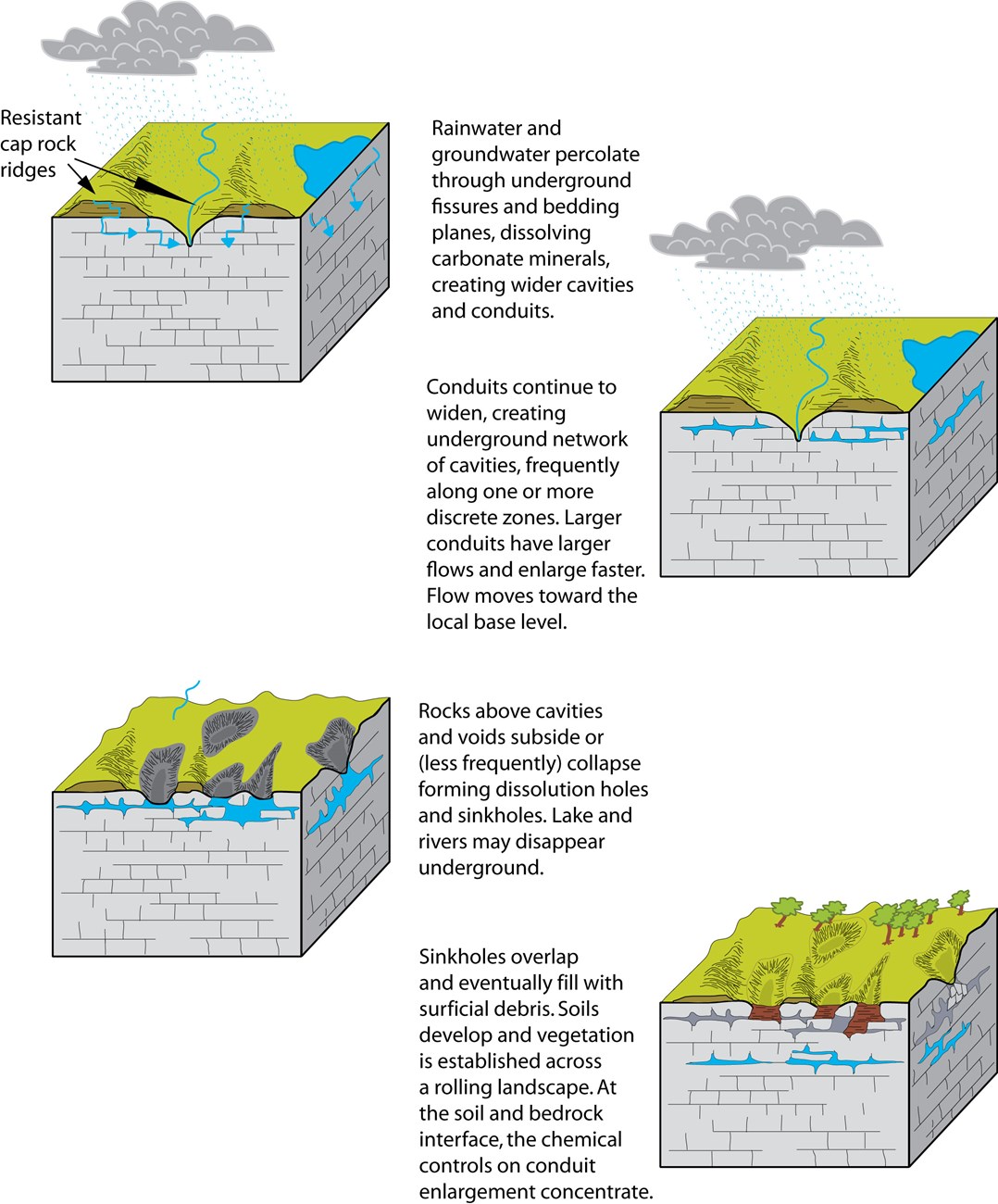
Photo by Glenn Gardner. Introduction
NPS photo by Scott House Karst is a type of landscape where the dissolving of the bedrock has created sinkholes, sinking streams, caves, springs, and other characteristic features. Karst is associated with soluble rock types such as limestone, marble, and gypsum. In general, a typical karst landscape forms when much of the water falling on the surface interacts with and enters the subsurface through cracks, fractures, and holes that have been dissolved into the bedrock. After traveling underground, sometimes for long distances, this water is then discharged from springs, many of which are cave entrances. SinkholesA sinkhole is a depression or hole formed when the land surface sinks due to underground bedrock dissolution or cave collapse. In developed areas, catastrophic sinkhole collapse can cause significant damage and loss of life. Karst and WaterKarst is ideal for storing water as an aquifer and provides vast amounts of clean drinking water to people, plants, and animals. Because of the porous (Swiss cheese-like) nature of karst, water flows quickly through it and receives little filtration. Therefore, contaminants that enter a karst aquifer are rapidly transported creating water quality problems. About 20% of the United States is underlain by karst landscapes and 40% of groundwater used for drinking comes from karst aquifers. It is imperative for our health and safety to protect karst landscapes. Development of Karst Landscapes
Illustration by Trista L. Thornberry-Ehrlich, Colorado State University. Photo GalleryGeological MonitoringFind Your Park—Karst LandscapesThe following is a partial list of National Park Service units that include karst landscapes:
Other Cave TypesKarst Landscapes | Solution Caves | Lava Caves or Tubes | Sea or Litttoral Caves | Talus Caves | Ice Caves | Glacier Ice Caves Related Links |
An official website of the United States government
Here's how you know
Official websites use .gov
A
.gov website belongs to an official government
organization in the United States.
Secure .gov websites use HTTPS
A
lock (
) or https:// means you've safely connected to
the .gov website. Share sensitive information only on official,
secure websites.
